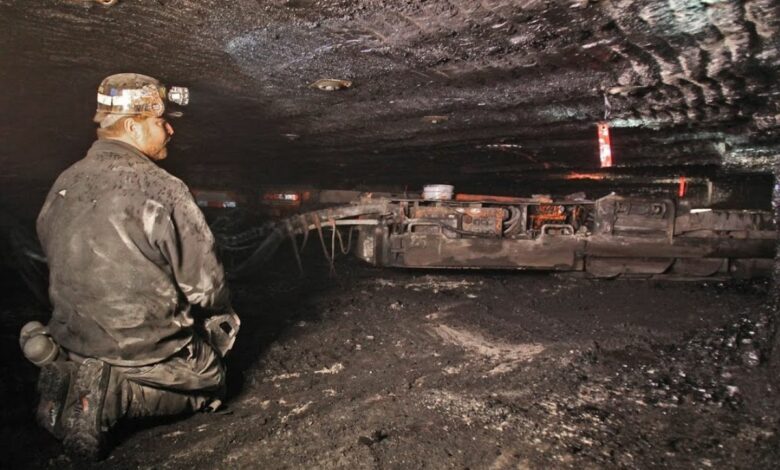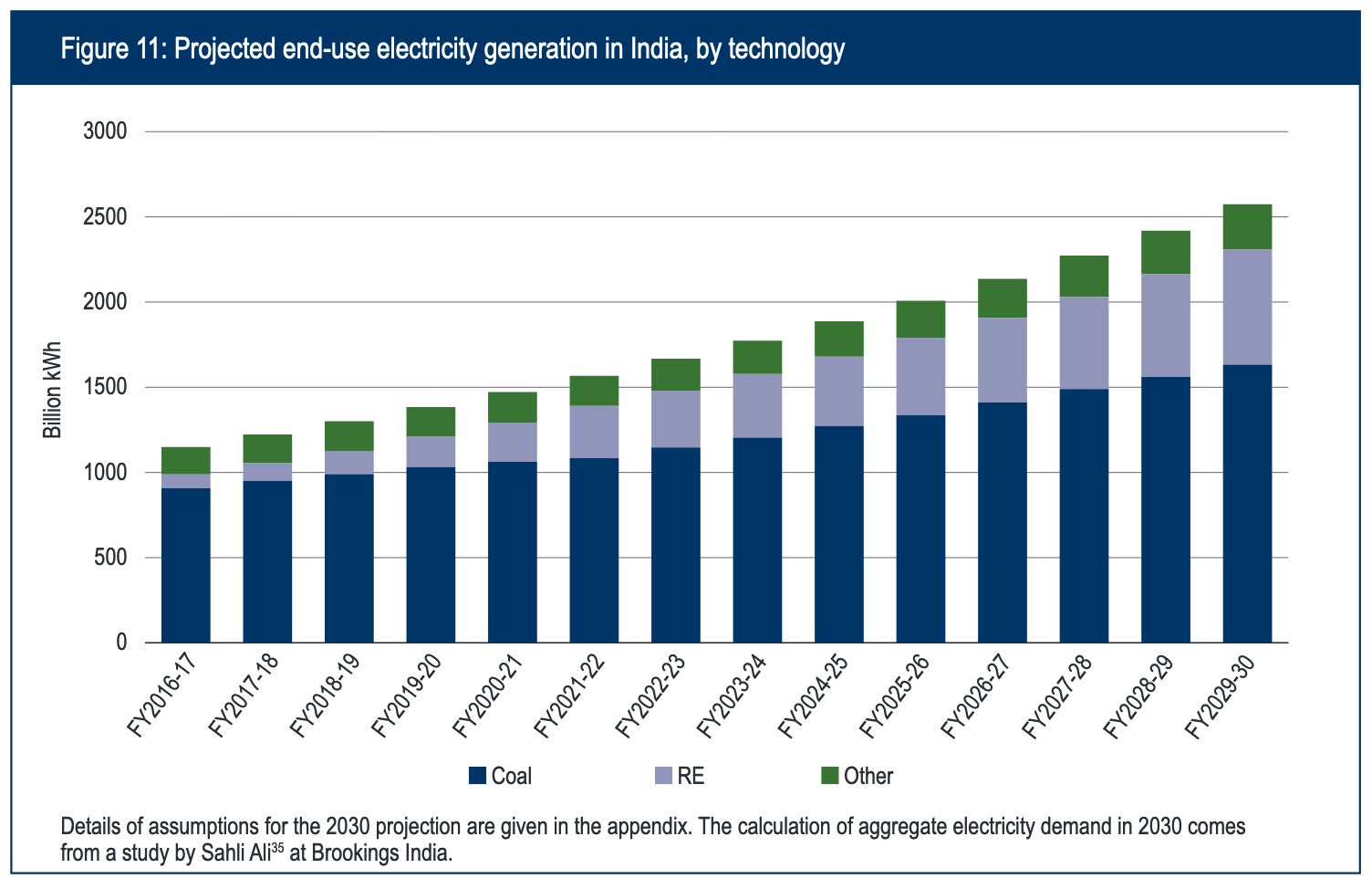A strong concern about coal consumption in India after heatwave causes power outage, hottest month since 1901
With environment concerns the Government has prepared a Mission document for coal gasification of 100 MT by 2030 since Coal gasification is considered as cleaner option compared to burning of coal, the ministry stated

The coal and coal consumption supplies at many thermal power plants are running unexpectedly low, spawning daily power outages in several other states. The shortages or decrease in power outages sparks scrutiny of India’s long reliance on coal consumption and power outages, producing 70% of the entire country’s electricity supply. In addition, an unusually early and brutal heatwave is in scorching parts of India. The heatwave with acute power shortages is affecting millions as the increasing demand for electricity surges to record new levels.

The situation highlights India’s pressing need for diversifying its energy sources. The increasing demand for electricity is expected to enhance and increase more than anywhere else in the world over the coming 20 years as the densely populated country develops, as the International Energy Agency reported.
The shortages are hitting as blisteringly high temperatures are sweeping over many parts of the country, prompting various authorities to close schools, sparking fires at massive landfills and shrivelling crops as a cool spring turned suddenly into unrelenting and terrifying heat.
Surprisingly, India recorded its hottest March month since 1901. Moreover, the average temperatures recorded in April in northern and central pockets of the country were said to be the highest in the previous 122 years, the Indian Meteorological Department revealed.
Temperatures almost breached 45 degrees Celsius (113 degrees Fahrenheit) in a total of 10 cities last week, although it is hoped that cloudy skies and rain could bring some relief soon for everyone. Changing Climate is making severe temperatures hotter and unreverent and more frequent, with heatwaves likely to strike India once in every four years instead of every five decades in the past, said Friederike Otto, who is a climate scientist at Imperial College London.
As a result, India urgently requires to prepare for record increases in power consumption as the result of this ongoing issue. Current power cuts dramatically hurt economic activities, rebound after the amid pandemic shutdowns, and could disrupt essential services, including hospitals, experts warn. Many states, including Uttar Pradesh, Punjab, Hariyana, and Rajasthan, have power outages of up to seven hours. On Friday, the Railroad Department cancelled more than 750 passenger trains, allowing more freight trains to carry coal from mines to power plants.
Coal Consumption in India
According to data from the Central Power Agency, of India’s 165 coal-fired power plants, 94 face very low coal inventories and eight are out of service as of Sunday. This means that the share has fallen below the normal level of 25%. Vibhuti Garg, an energy economist at the Institute for Energy Economics and Financial Analysis, said that 4,444 government regulations require power plants to hold 24 days of coal stockpiles. Still, many do so on a daily basis. However, it states that it has not.



This year, much of India had an excellent spring before temperatures rose rapidly and dramatically. “Then, demand suddenly recovered, and inventories fell much faster than expected,” Garg said. “And it’s becoming a kind of panic situation where they’ll soon run out of cash.”
However, experts say there are few power outages due to coal shortages, and demand forecasts and timely transportation plans are inadequate. That’s why. “We don’t have enough resources to make accurate forecasts. So the surge in demand wasn’t surprising,” Garg said for the explanation.
“There is plenty of coal but a lack of foresight and planning,” said Sunil Dahiya, an Energy Research and Clean Air Center analyst. “It may have been avoided.” Part of the shortage could have been covered by imported coal, Garg said. However, since Russia invaded Ukraine, global prices have skyrocketed, reaching $ 400 per ton in March, making it affordable for utilities.
Analysts expect demand to decline in the coming weeks, significantly as the heat diminishes, but in July and August, supported by rising humidity and the planting season in some Indian states. May recover again. It is also the beginning of a monsoon where heavy rains can flood coal mines and disrupt both mining and supply. A similar energy crisis struck last October after unusually heavy rains hit several mines. Hence, freeing freight trains to carry.
Experts said that coal should ease the situation and provide some relief, but it is not a long-term solution. When climate change exacerbates heat waves, energy shortages become routine and demand only increases. But the answer is not to open a new mine or add coal to India’s energy mix. This is because greenhouse gases increase, which traps more heat.



“We need to focus on strengthening renewable energy and improving reliability actively. Otherwise, we are overly dependent on this one fuel source, and the same problem will continue to occur, “says Dahiya.
The coal and coal consumption supplies at many thermal power plants are running unexpectedly low, spawning daily power outages in several other states. The shortages or decrease in power outages sparks scrutiny of India’s long reliance on coal consumption and power outages, producing 70% of the entire country’s electricity supply. In addition, an unusually early and brutal heatwave is in scorching parts of India. The heatwave with acute power shortages is affecting millions as the increasing demand for electricity surges to record new levels.



The situation highlights India’s pressing need for diversifying its energy sources. The increasing demand for electricity is expected to enhance and increase more than anywhere else in the world over the coming 20 years as the densely populated country develops, as the International Energy Agency reported.
The shortages are hitting as blisteringly high temperatures are sweeping over many parts of the country, prompting various authorities to close schools, sparking fires at massive landfills and shrivelling crops as a cool spring turned suddenly into unrelenting and terrifying heat.
Surprisingly, India recorded its hottest March month since 1901. Moreover, the average temperatures recorded in April in northern and central pockets of the country were said to be the highest in the previous 122 years, the Indian Meteorological Department revealed.
Temperatures almost breached 45 degrees Celsius (113 degrees Fahrenheit) in a total of 10 cities last week, although it is hoped that cloudy skies and rain could bring some relief soon for everyone. Changing Climate is making severe temperatures hotter and unreverent and more frequent, with heatwaves likely to strike India once in every four years instead of every five decades in the past, said Friederike Otto, who is a climate scientist at Imperial College London.
As a result, India urgently requires to prepare for record increases in power consumption as the result of this ongoing issue. Current power cuts dramatically hurt economic activities, rebound after the amid pandemic shutdowns, and could disrupt essential services, including hospitals, experts warn. Many states, including Uttar Pradesh, Punjab, Hariyana, and Rajasthan, have power outages of up to seven hours. On Friday, the Railroad Department cancelled more than 750 passenger trains, allowing more freight trains to carry coal from mines to power plants.
Coal Consumption in India
According to data from the Central Power Agency, of India’s 165 coal-fired power plants, 94 face very low coal inventories and eight are out of service as of Sunday. This means that the share has fallen below the normal level of 25%. Vibhuti Garg, an energy economist at the Institute for Energy Economics and Financial Analysis, said that 4,444 government regulations require power plants to hold 24 days of coal stockpiles. Still, many do so on a daily basis. However, it states that it has not.



This year, much of India had an excellent spring before temperatures rose rapidly and dramatically. “Then, demand suddenly recovered, and inventories fell much faster than expected,” Garg said. “And it’s becoming a kind of panic situation where they’ll soon run out of cash.”
However, experts say there are few power outages due to coal shortages, and demand forecasts and timely transportation plans are inadequate. That’s why. “We don’t have enough resources to make accurate forecasts. So the surge in demand wasn’t surprising,” Garg said for the explanation.
“There is plenty of coal but a lack of foresight and planning,” said Sunil Dahiya, an Energy Research and Clean Air Center analyst. “It may have been avoided.” Part of the shortage could have been covered by imported coal, Garg said. However, since Russia invaded Ukraine, global prices have skyrocketed, reaching $ 400 per ton in March, making it affordable for utilities.
Analysts expect demand to decline in the coming weeks, significantly as the heat diminishes, but in July and August, supported by rising humidity and the planting season in some Indian states. May recover again. It is also the beginning of a monsoon where heavy rains can flood coal mines and disrupt both mining and supply. A similar energy crisis struck last October after unusually heavy rains hit several mines. Hence, freeing freight trains to carry.
Experts said that coal should ease the situation and provide some relief, but it is not a long-term solution. When climate change exacerbates heat waves, energy shortages become routine and demand only increases. But the answer is not to open a new mine or add coal to India’s energy mix. This is because greenhouse gases increase, which traps more heat.



“We need to focus on strengthening renewable energy and improving reliability actively. Otherwise, we are overly dependent on this one fuel source, and the same problem will continue to occur, “says Dahiya.
edited and proofread by nikita sharma







